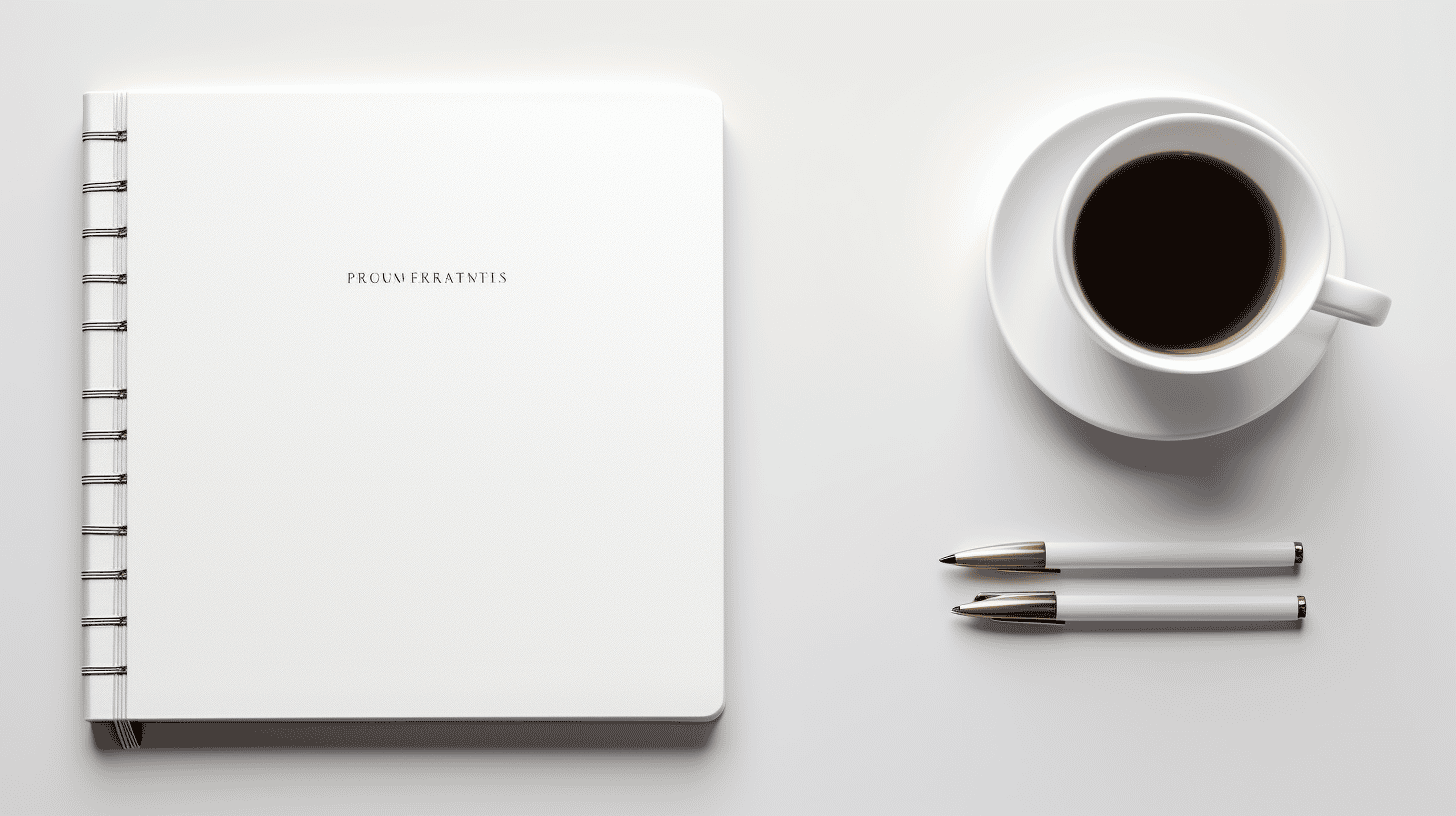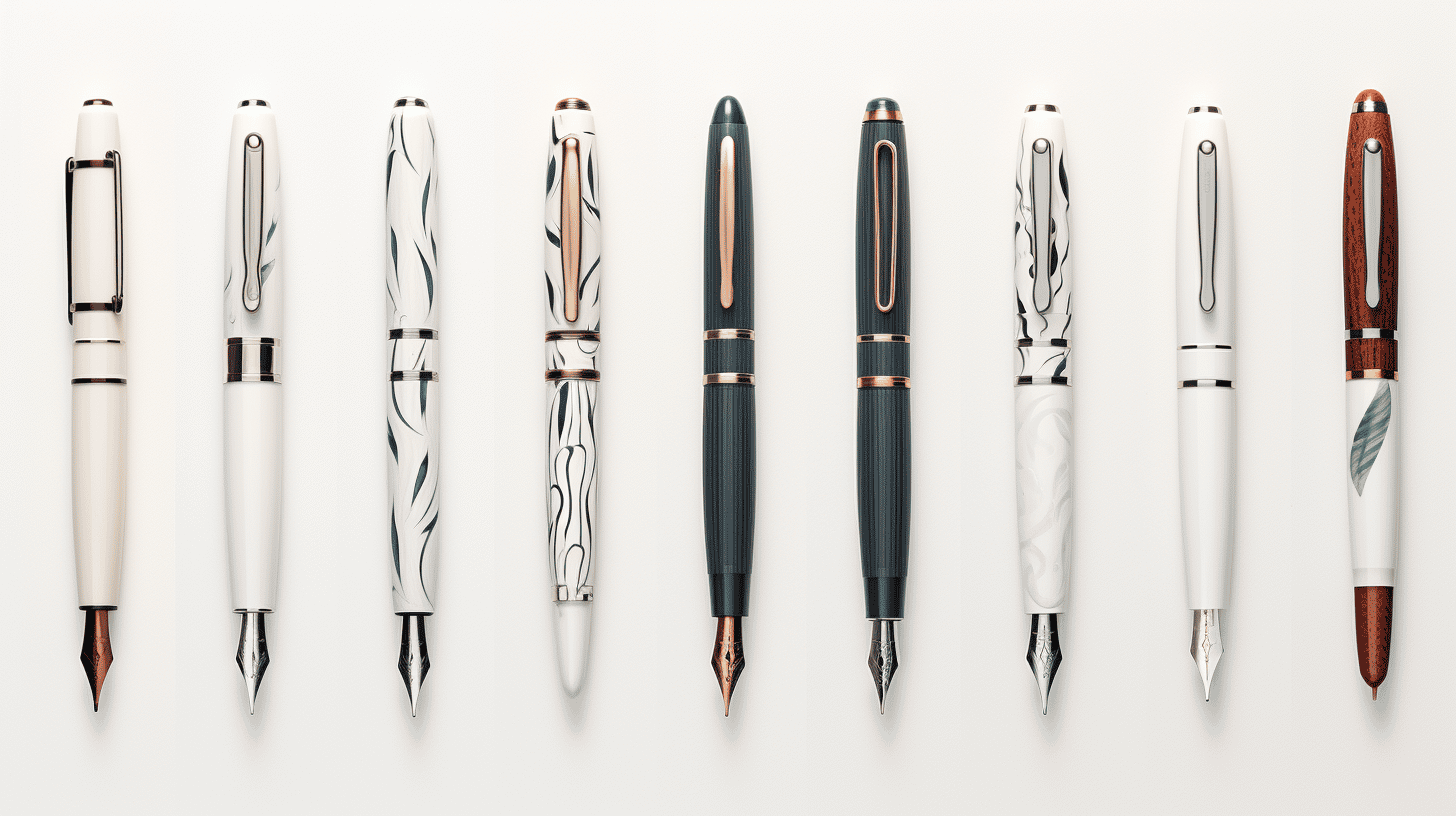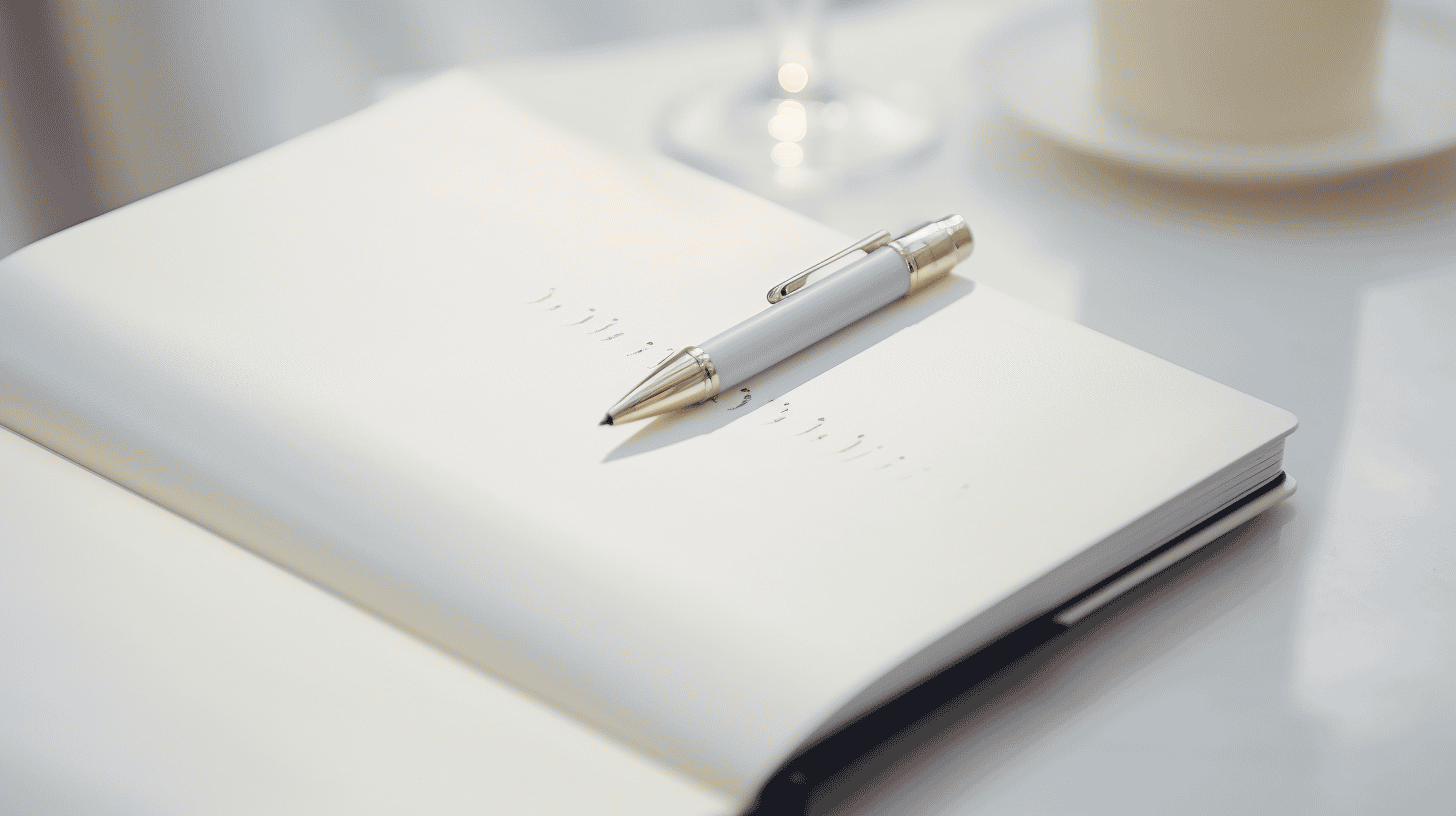
A Guide to Fountain Pen Etiquette in Business Meetings
In today's fast-paced digital world, where emails and typing have become the norm, the art of writing with a fountain pen seems to be fading away. However, there is still a niche group of individuals who appreciate the elegance, sophistication, and tactile charm that comes with using a fountain pen. Among these individuals, corporate professionals stand out as advocates for the fountain pen's unique qualities.
In this guide, we will explore the common use of fountain pens among business professionals and delve into the etiquette of using a fountain pen in a business meeting. We will also discuss the care and maintenance of these exquisite writing instruments. Whether you are a fountain pen enthusiast or simply curious about the world of fountain pens, this guide will provide you with valuable insights and tips for navigating the fountain pen etiquette in a business setting.
So, let's dive into the world of fountain pens and discover the charm they bring to business meetings.
Common Use of Fountain Pens Among Corporate Professionals
Imagine walking into a high-powered corporate boardroom. The executives are gathered around the table, each holding a sleek and sophisticated writing instrument in their hands. What do you see? It's likely to be a fountain pen.
Fountain pens have long been associated with professionalism, elegance, and class. They exude a sense of prestige and sophistication that truly sets them apart from other writing instruments. It's no wonder that they have become the preferred choice of corporate professionals around the world.
Market Value of Fountain Pens
The global market value of fountain pens has been on a steady rise, reflecting the increasing popularity of these timeless writing tools. In 2021, the market was valued at an impressive USD 929 million. And the growth isn't showing any signs of slowing down. Experts predict that the market will continue to grow at a compound annual growth rate (CAGR) of 2.51% during the forecast period.
Percentage of Population Using Fountain Pens
Fountain pens have a devoted following among corporate professionals. According to a recent survey, a staggering 79% of participants reported using fountain pens regularly. That's an overwhelming majority who appreciate the art of writing with these exquisite instruments. In fact, some individuals are so enamored with fountain pens that they own and use up to 50 pens at a time!
But what makes fountain pens so appealing to corporate professionals? Let's take a closer look.
- Elegance and Prestige: Fountain pens are synonymous with class and elegance. They make a statement when you sign documents or jot down notes during a business meeting. With their sleek designs, lustrous finishes, and fine craftsmanship, they project an image of authority and sophistication.
- Smooth and Effortless Writing: The smooth and fluid writing experience offered by fountain pens is unmatched. They glide effortlessly across the paper, making every stroke feel like a work of art. This not only enhances the writing experience but also helps to improve handwriting and convey professionalism.
- Personalization: Fountain pens offer a level of personalization that other writing instruments simply can't match. From choosing the type of nib and ink color to selecting a pen that reflects your own style and personality, fountain pens allow corporate professionals to make a statement with their writing instrument.
- Sustainability and Longevity: Fountain pens are built to last. Unlike disposable ballpoint pens, fountain pens are designed to be refilled and reused, reducing waste and being more environmentally friendly. They can also be passed down as heirlooms, creating a lasting legacy.
In conclusion, fountain pens have become an integral part of the corporate professional's toolkit. The market value of these writing instruments is on the rise, and a significant percentage of professionals are embracing fountain pens as their go-to choice for both work and personal use. With their elegance, smooth writing experience, personalization options, and sustainability, it's no wonder that fountain pens continue to be the writing instrument of choice for those who strive for excellence in all aspects of their professional lives.
Etiquette of Using a Fountain Pen in a Business Meeting
In today's digital age, the art of writing with a fountain pen may seem like a lost art. However, there are still situations where the use of a fountain pen can bring an air of elegance and professionalism to a business meeting. Whether you're signing important documents or taking notes during a presentation, using a fountain pen correctly can make a lasting impression. In this article, we will explore the etiquette of using a fountain pen in a business meeting, covering everything from holding the pen correctly to avoiding common mistakes that could undermine your professionalism.
Holding the Pen Correctly
One of the first things to consider when using a fountain pen is how to hold it correctly. While there is no one-size-fits-all answer to this question, there are some general guidelines you can follow:
- Hold the fountain pen between the index finger and middle finger, with the pen resting lightly on the web of your hand.
- Avoid gripping the pen too tightly, as this can inhibit the flow of ink and make it difficult to write smoothly.
- Experiment with different positions until you find one that feels comfortable and allows for fluid, effortless writing.
Remember, the goal is to maintain a relaxed grip that allows you to write gracefully and comfortably throughout the meeting. Practice holding the pen correctly before the meeting to ensure that you look confident and at ease when using it.
Asking Permission
While using a fountain pen in a business meeting can be seen as a sign of sophistication, it's important to remember that not everyone may feel the same way about their pens. Some people may be protective of their writing instruments or have had negative experiences with others mishandling their pens.
To avoid any potential misunderstandings or uncomfortable situations, it's always best to ask for permission before using someone else's fountain pen. This small gesture shows respect for both the pen and its owner, and it can go a long way in establishing a positive impression during the meeting.
Influence of Paper and Ink
To get the most out of your fountain pen, it's crucial to consider the type of paper and ink you're using. Different combinations of paper and ink can significantly affect the performance of a fountain pen. Here are a few tips to keep in mind:
- Choose high-quality, smooth paper that won't cause your pen to skip or scratch.
- Avoid using cheap or thin paper, as these can lead to feathering and ink bleed-through.
- Experiment with different types of ink to find one that flows smoothly and dries quickly.
By using the right combination of paper and ink, you can ensure that your fountain pen glides effortlessly across the page, leaving behind clean, elegant lines.
Correct Pen Angle
Another factor to consider when using a fountain pen is the angle at which you hold it. To achieve optimal performance and smooth writing, it's generally recommended to hold the pen at a 30-45 degree angle from the paper. This angle allows the fountain pen nib to make optimal contact with the paper, enhancing the ink flow and preventing excessive scratching or skipping.
Experiment with different angles and find the one that feels most comfortable for you. Keep in mind that the angle may vary depending on the shape and design of the pen nib.
Avoid Twisting
One common mistake that can lead to ink leakage or damage to the pen is twisting the pen while writing. It's important to remember that fountain pens are not designed to be twisted like ballpoint pens. The twisting mechanism, if present, is usually reserved for accessing the ink reservoir.
Instead, focus on maintaining a steady grip and applying consistent pressure to the pen while writing. Avoid twisting or rotating the pen, as this can lead to unintended consequences such as tearing the paper or spilling ink.
Be Mindful of the Position
Lastly, if you're traveling to a business meeting by air, it's important to be mindful of the position of your fountain pen during the flight. Changes in air pressure can cause the ink to expand or contract, potentially leading to leaks or messes in your bag or pocket.
To prevent any mishaps, consider carrying your fountain pen in a protective case or keeping it in an upright position during the flight. This simple precaution can save you from the hassle of dealing with ink stains and ensure that your fountain pen is in pristine condition when you arrive at your destination.
By following these etiquettes of using a fountain pen in a business meeting, you can elevate your professionalism and make a lasting impression. Remember to hold the pen correctly, ask for permission when needed, choose the right paper and ink, maintain the correct pen angle, avoid twisting, and be mindful of the pen's position during flights. With these tips in mind, you'll be able to confidently and elegantly use a fountain pen in any business setting.
Care and Maintenance of Fountain Pens
Fountain pens are more than just writing instruments; they are a timeless symbol of elegance and sophistication. Whether you are a seasoned fountain pen aficionado or just starting your collection, proper care and maintenance are essential to ensure that your pens continue to deliver an exceptional writing experience for years to come. In this article, we will explore the best practices for cleaning and priming fountain pens, proper storage techniques, how to select the right ink, and the benefits of regular use.
Cleaning and Priming
When you first acquire a new fountain pen, it is crucial to clean and prime it before use. This process ensures optimal ink flow and prevents any residue buildup that may affect the pen's performance. Here are some steps to follow:
- Disassemble the pen: Unscrew the barrel and remove the ink converter or cartridge.
- Rinse the nib: Run lukewarm water over the nib to remove any manufacturing residue or dried ink. Gently shake the pen to remove excess water.
- Clean the converter or cartridge: If using a converter, flush it with water until it runs clear. For cartridges, replace them with a new one.
- Reassemble the pen: Carefully screw the barrel back onto the pen, ensuring a snug fit.
By following these cleaning and priming steps, you can ensure that your fountain pen is ready to deliver smooth, consistent ink flow.
Storage and Prevention
Proper storage is crucial for maintaining the longevity and performance of your fountain pens. Here are some tips to keep in mind:
- Store fountain pens upright: Keeping your pens in an upright position helps prevent leaks and ensures that the ink is evenly distributed throughout the nib.
- Protect the nib with the cap: Always use the cap of the fountain pen when the pen is not in use. This will prevent the nib from drying out and protect it from any potential damage.
- Use suitable paper: To enhance your writing experience with a fountain pen, opt for fine paper without granules or a rough texture. This type of paper allows the ink to flow smoothly and reduces the risk of feathering or bleed-through.
By following these storage and prevention practices, you can preserve the integrity of your fountain pens and enjoy a flawless writing experience every time.
Ink Selection
Choosing the right ink is essential for optimal performance and longevity of your fountain pens. Here are some key considerations when selecting ink:
- Use fountain pen ink: It is crucial to use ink specifically designed for fountain pens. Avoid using ink meant for dip pens or calligraphy, as they may contain particles or pigments that can clog or damage the pen's delicate mechanism.
- Consider ink characteristics: Different inks have varying properties, such as drying time, saturation, and shading. Explore different brands and colors to find the ink that suits your writing style and preferences.
- Experiment with samples: If you're unsure about a particular ink, consider purchasing samples before committing to a full bottle. This way, you can test it out without the risk of wasting ink or potentially damaging your pen.
By selecting the right ink and being mindful of its characteristics, you can enhance your writing experience and extend the life of your fountain pens.
Regular Use
Regular use is essential for maintaining optimal ink flow in your fountain pens. Here's why:
- Prevent drying and clogging: Leaving a filled and unused fountain pen for an extended period can lead to drying or clogging of the nib. By using your pen regularly, you keep the ink flowing smoothly and prevent any ink residue from causing issues.
- Enjoy the benefits: Writing with a fountain pen is a unique experience, offering a smooth and comfortable writing sensation. By using your fountain pen regularly, you can fully appreciate its distinctive qualities and enjoy the pleasure of writing with style.
In conclusion, caring for and maintaining your fountain pens is essential for optimal performance and longevity. By following these practices, you can ensure that your pens continue to deliver a superb writing experience for years to come. Happy writing!
Conclusion
In conclusion, the art of using a fountain pen in business meetings goes beyond mere functionality. It is an opportunity to showcase sophistication and professionalism. By understanding the etiquette of holding a pen correctly, requesting permission to use it, and being mindful of the influence of paper and ink, one can make a lasting impression. Regular care and maintenance, such as cleaning and priming, proper storage, and selecting the right ink, will ensure that your fountain pen serves you well for years to come.
Remember, a fountain pen is not just a tool; it's an expression of elegance and refinement. With a Wood Fountain Pen, you can elevate your writing experience even further. Handcrafted with precision and boasting exquisite wooden designs, our pens capture the allure and joy of writing. Discover the beauty of Wood Fountain Pens and indulge in the art of penmanship. Visit us at woodfountainpens.com to explore our collection and find the perfect pen for your writing endeavors.
Unleash your creativity, leave a lasting impression, and embrace the sophistication of writing with a Wood Fountain Pen today!
Frequently Asked Questions
-
Is it appropriate to use a fountain pen in business meetings?
Yes, using a fountain pen in business meetings can be seen as a sign of elegance and professionalism. However, it's important to use it appropriately and maintain proper etiquette.
-
What type of fountain pen should I use in business meetings?
Choose a high-quality fountain pen that writes smoothly and doesn't leak. Opt for a pen with a conservative design and avoid flashy or colorful ones that might be seen as unprofessional.
-
Should I bring extra ink cartridges or a backup pen to business meetings?
It's a good idea to carry extra ink cartridges or have a backup pen with you in case the ink runs out or the pen malfunctions during an important meeting. Being prepared shows professionalism.
-
What is the proper way to handle a fountain pen during a business meeting?
Hold the fountain pen with a firm yet comfortable grip. Avoid twirling it or playing with it during the meeting, as it can be distracting. Always use the pen to write neatly and legibly.
-
Should I offer my fountain pen to others during a business meeting?
It's generally not expected to offer your personal fountain pen to others during a business meeting. However, if a colleague or client needs to sign a document and doesn't have a pen, it's courteous to offer yours temporarily.







Leave a comment
This site is protected by hCaptcha and the hCaptcha Privacy Policy and Terms of Service apply.